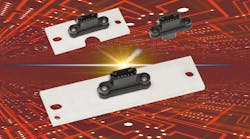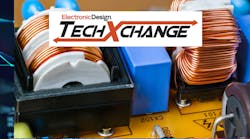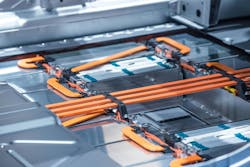New Current Sensors Preside Over Power Distribution in EVs and Beyond
Busbars are widely used to distribute vast amounts of electric current under the hood of electric vehicles (EVs), in factory equipment, and around data centers. But accurately sensing the current traveling through them is critical for safe, efficient power management.
To stay on top of the trend, Molex rolled out a family of current sensors that are up to 50% smaller and 86% lighter than other busbar solutions for the automotive and industrial markets, where currents are trending up.
The new Percept family leverages Infineon's high-precision, coreless current sensors and Molex's proprietary electronics packaging technology to reduce their overall size. The high density also contributes to reductions in a system’s overall weight, while simplifying integration and giving engineers more placement flexibility.
>>Check out these TechXchanges for similar articles and videos
The devices can accurately sense current flowing through busbars within 2% over a wide temperature range and the full product lifespan, with low sensitivity and offset errors. They can measure currents from ±450 to ±1,600 A, and they have a supply voltage range of 4.5 to 5.5 V. Molex said Percept covers industrial- and automotive-grade sensors with full differential and single-ended outputs plus bidirectional sensing. The operating temperature range is −40 to 125°C.
In general, busbars are flat bars of laminated copper or aluminum, and they have several advantages over wiring when it comes to power distribution. Busbars usually can carry more current than cables with the same thickness. They also contribute to thermal management: a larger surface area means the busbar dissipates heat more efficiently than cabling. If you’re feeding power to many power transistors, you can pull the heat out of the same device that delivers the current.
In electric cars, busbars aren’t unlike blood vessels spreading out from the main battery pack. Their role is to conduct electrical currents from the battery to the powertrain and other loads. Besides high-current power distribution, they can also double as heatsinks.
Without busbars, the EV may be prone to overheating due to the tremendous heat generated by the pack, which can contain up to hundreds of battery cells. Even though they tend to be wider than the wiring inside the EV, busbars are usually very flat, so they can fit into tight spaces.
These systems also make extensive use of cabling for power distribution. While they’re relatively bulky, power cables are more flexible, suiting them for situations where power routing has many twists and turns. Their flexibility can also help in handling vibrations, which may cause difficulties in EVs or on factory floors. In contrast, busbars are rigid and must be bent into different shapes to get around obstacles in the system.
Current Sensors in Power Distribution
Understanding the ins and outs of current being distributed around the system is vital. Current sensors are used to ensure the power system’s safe and efficient operation. They can assist with everything from protection against short circuits and other transients; real-time control, such as peak-current-mode or average-current-mode control loops; to power management, as in safely and reliably charging and discharging high-voltage batteries.
Molex said Percept enables more precise current measurement due to the differential Hall-effect design of the coreless current sensors. The sensors are also designed to suppress electromagnetic interference (EMI) and other noise from stray magnetic fields that are prevalent inside EVs that drive electric motors at speeds of more than 20,000 rotations per minute (RPM). Current sensors like those from Infineon measure the difference in the magnetic field created when current rushes through the busbar.
Given its precision under pressure, the Percept family fits power systems that need to tolerate hot temperatures, elevated currents, and harsh environments, Molex said. Its unique electronics packaging technology enables the tight integration of high-current conductors, connectors, circuit boards, busbars, and heatsinks, along with other mechanical components, in a single unit that can be bolted to power-distribution systems in a “plug-and-play” manner.
The industrial-grade sensors are due out later in 2024, with automotive-grade components to be released in the first half of 2025.




